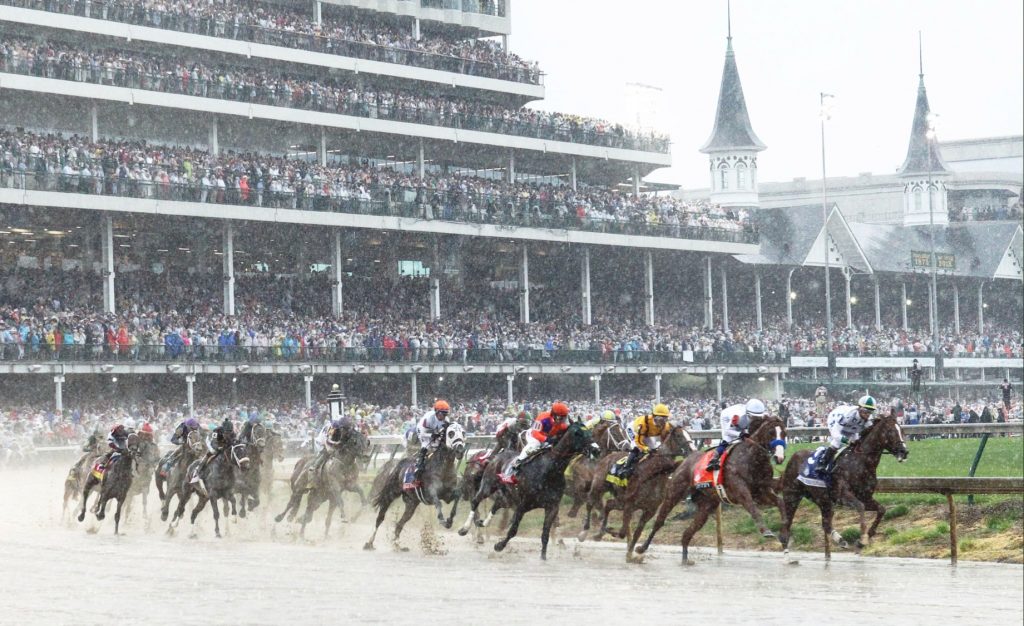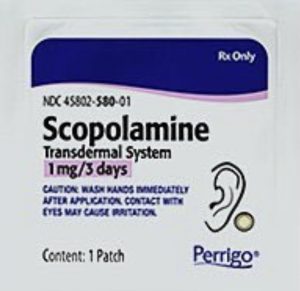
Justify: A Triple Crown Tainted?
By Nick D’Agostino

In light of the recent developments or perhaps allegation being the more accurate word, The Triple Crown of Justify will likely be forever tainted. This is unfortunate for the Sport of Kings because at this point we do not know that any asterisk is warranted. Let’s take a close and realistic view at what we know.
According to an article in the New York Times, by Joe Drape, retired thoroughbred Justify who won the Triple Crown in 2018 was tested after his win in the Santa Anita Derby and found to be positive for Scopolamine. If a disqualification occurred as a result of the positive test, he of course would not have earned enough points to compete in the Kentucky Derby.
According to Drape, Justify, trained by Bob Baffert, should have indeed been disqualified around April 7th when the positive results were yielded just after winning the key derby points prep race. Instead, the California Horse Racing Board notified Baffert of the failed test nine days before the Kentucky Derby while allowing Justify to race and ultimately win the Kentucky Derby anyway. Soon after Justify followed up that win with a Preakness win and then moved on to conquer the Belmont Stakes on June 9th taking the coveted Triple Crown. Drape’s article makes no mention of the rigorous testing for the Triple Crown races, by three different states, none of which recorded any positive for Justify that has been disclosed.
According to Drape’s article, and seemingly confirmed by his interviews and investigation, California regulators decided four months later in a behind closed doors meeting to dispose of the inquiry citing “probable contamination” as a possible reason for the positive drug test.
The Executive Director of the CHRB, Rick Baedeker claimed the case was delicate due to the timing and claimed that regulators had moved slowly because Scopolamine could be found in jimson weed, which is rampant in California, and could have been mixed with horse feed or made its way into it.
Baedeker said per the Times:
“There was no way that we could have come up with an investigative report prior to the Kentucky Derby. That’s impossible. Well, that’s not impossible, that would have been careless and reckless for us to tell an investigator what usually takes you two months, you have to get it done in five days, eight days. We weren’t going to do that.”
Baffert has yet to respond to the Times’s inquiries for comment. He has indicated he will release a statement on Thursday, September 12th. We will update this story accordingly.
As part of the Times story Drape conferred with Dr. Rick Sams, a former head of the drug lab for the Kentucky Horse Racing Commission, and Drape says that Sams claimed scopolamine can be used as a bronchodilator that will clear a horse’s airway and optimize its heart rate. According to Drape, Sams said that 300 nanograms per milliliter was found in the horse’s system, an excessive amount that:
“suggested the drug was intended to enhance performance.”
Drape does not quote Dr. Sams and does not explain or address exactly how someone from the Kentucky Horse Racing Commission would have detailed knowledge of a test performed by the CHRB, a test whose results were not made public, and one where no complaint was ever filed. This is a crucial aspect of this story equally as important as the conflict issue we will touch on shortly, and the handling issue. Reason being 300 nanograms per milliliter is a large enough amount to make a strong argument against contamination. In European racing 35 nanograms per milliliter is considered probable contamination. In Louisiana 70 nanograms per milliliter is considered probable contamination. It becomes obvious why the results of the test are crucial, not solely for the positive, but the amount. The fact California racing has a history of top trainers like Richard Mandella and Ron McAnally with this very same drug resulted in positive tests being found to be contamination following lengthy due process is also important.
Scopolamine is listed as a “4C” drug by the Association of Racing Commissioner’s International. 4C drugs are considered the least serious of all drugs that are prohibited in horse racing. The ARCI’s recommended penalty for any trainer’s first offense with a 4C drug is a minimum of a written warning to the maximum of a $500 fine. However, the presence of even such a minor drug can result in the disqualification of a horse.
Scopolamine is found in jimson weed, which grows wildly, and has been known to inadvertently get mixed into a horse’s feed. The handling of this matter aside, the CHRB obviously believes that is precisely what happened with Justify. This is why the amount or precise nanograms found per milliliter is crucial. This will lend credence to one side or the other.
Apparently, the rules and punishment for being found positive for Scopolamine were reduced in California right after this incident. Jerry Hollendorfer was fined $1000 dollars and the purse was redistributed for an incident where a horse named Dixie Crisp, who won at Bay Meadows in February of 2007 was found to have tested positive for Scopolamine.
Right, wrong or indifferent, this entire incident begs for a unified body in horse racing to oversee these types of situations and more so that everything is dealt with the same way. It is long overdue in the Sport of Kings. This is not the next black eye horse racing needed right now, although the article seems to have accomplished that despite some glaring deficiencies. Another very troubling aspect of this case is the inherent conflict of interest the CHRB and California racing seem to be so comfortable with. You can’t have board members, shot callers, and decision makers with financial interests in the parties they govern. It is wrong, it is bad, it is unacceptable for even one more ruling. It creates the appearance of impropriety whether or not there is any. This is something racing cannot afford, especially at this juncture in California. We had owners who have horses with Bob Baffert, making a behind closed door decision to throw out a positive test and allow a horse to run in the Kentucky Derby. That smells bad to any nose.
Justify was the 13th horse to become a Triple Crown winner. Will he be the first with an asterisk and more importantly does he deserve one?
This story will be updated.
UPDATE:
The smoke has cleared on this story/non story. The Justify positive went from headlines to all but forgotten in just under 48 hours. Bob Baffert stated it was contamination and the horse as well as his records speak for themselves. Elliott Walden stated he knew of the test, referred it to legal counsel but no case for the positive was ever brought. Coolmore doesn’t seem to care. They stated they were happy with Justify, they were keeping him and they had nothing to do with him while racing. The CHRB maintains they could not prove it was not contamination especially in California where this particular weed is a problem. The 300 nanograms seems to be accurate but reportedly there was much less in the urine sample which further points to contamination.
While likely a contamination case, this does not take away from the conflict California racing has, condones and promotes regarding the board members, who they govern, and their financial and other interests.
Always check with Past the Wire for the latest horse racing news and more…..


